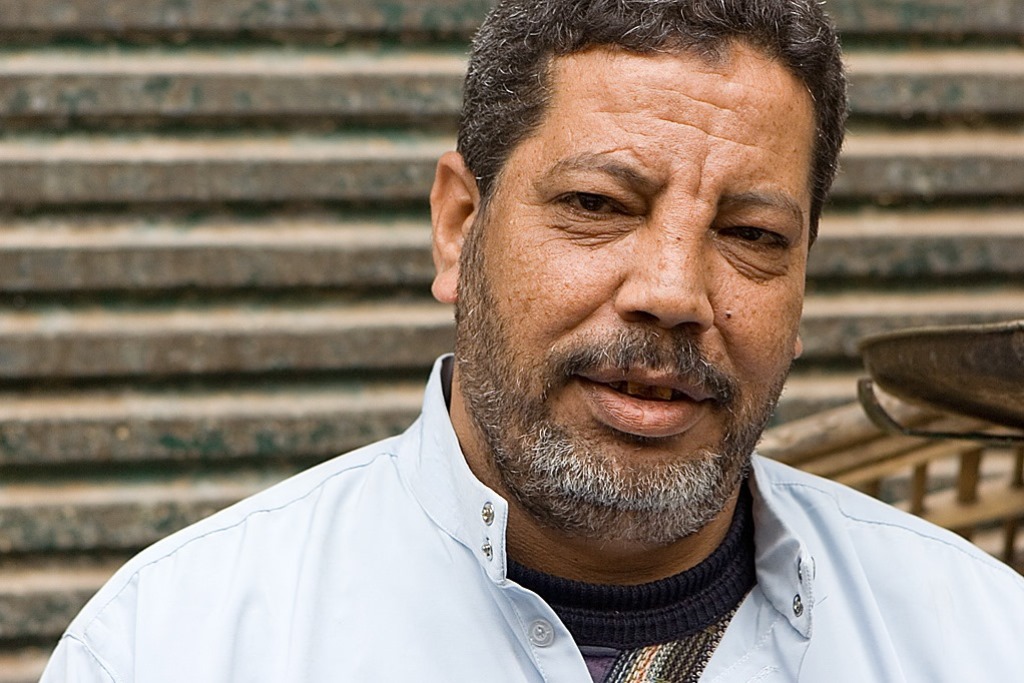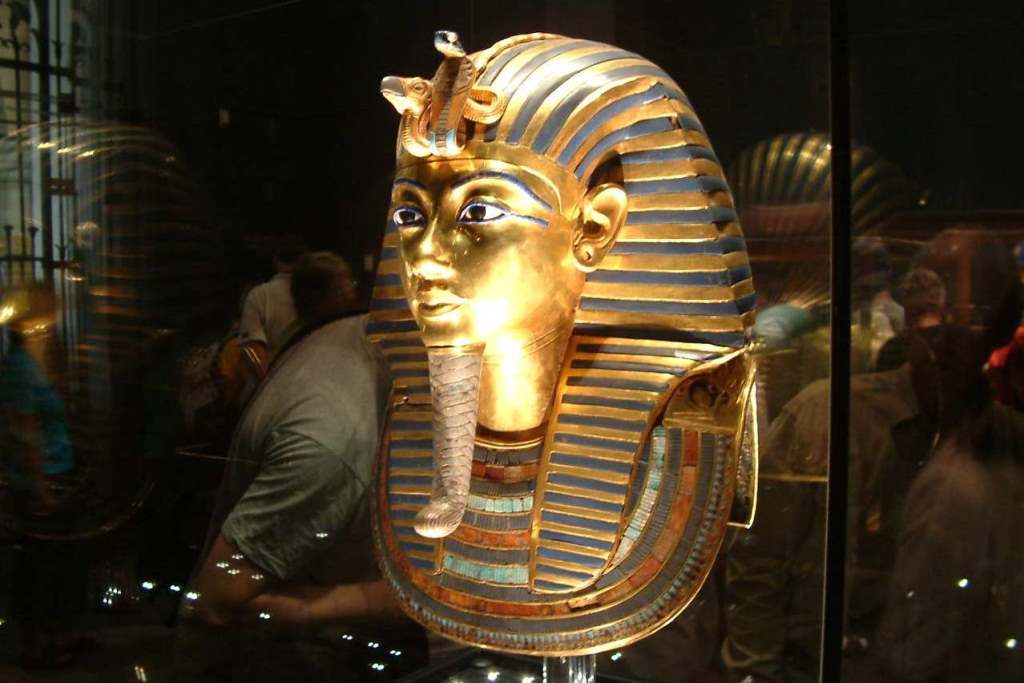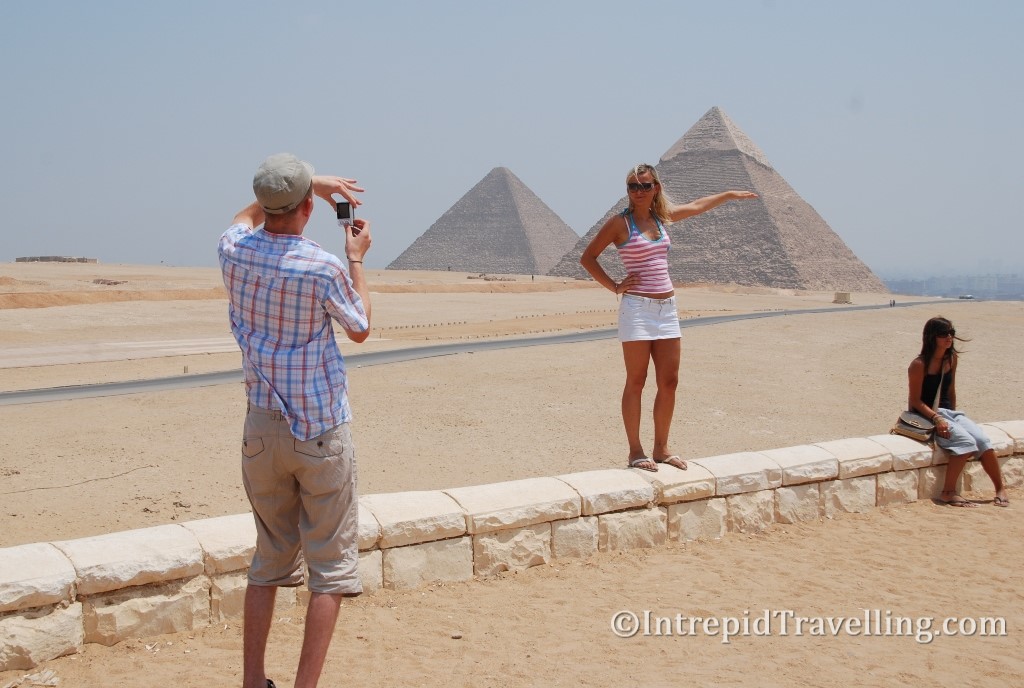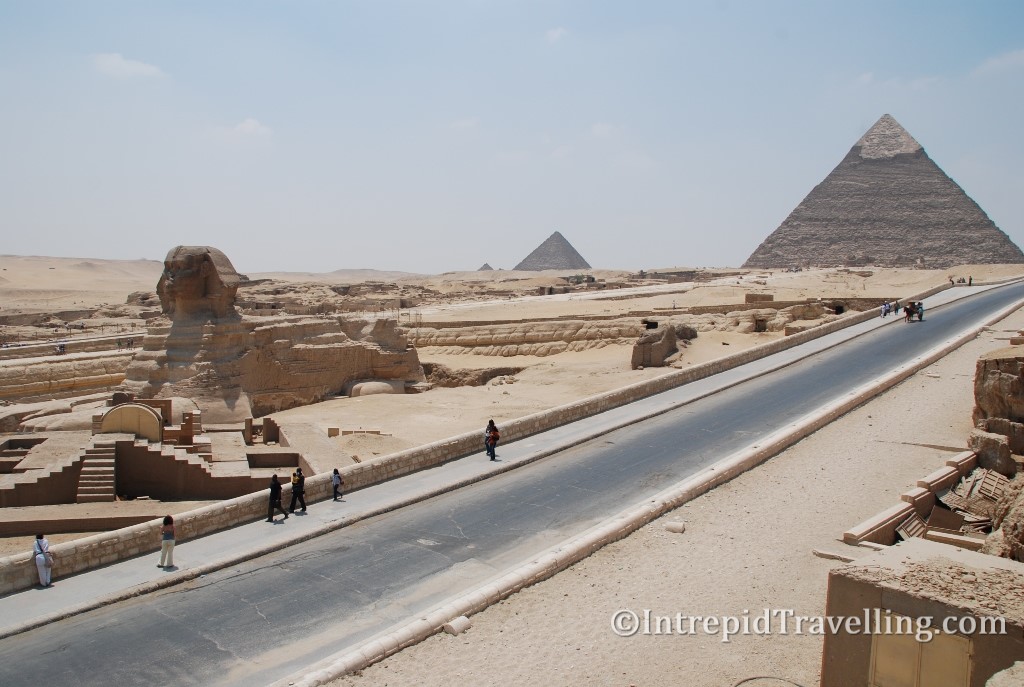Travel to and from the coastal town of Alexandria and Cairo can easily be done by train as it’s a three and a half hour train ride across the fertile Nile Delta between the two cities. This country must be huge because for the entire trip I observed only green agricultural land, amazingly though about 95% of Egypt is desolate desert.
Once in Cairo you’ll likely see quite different scenes, Feluccas sailing on the world’s longest river which runs right through the city of some 20 million, bakeries baking Egyptian pita-style bread, a common base to meals here. The wholemeal flour they use to make this has made this my favourite bread I’ve had throughout the Middle East and Subcontinent.
On the streets of central Cairo you’ll notice that like other Arab nations, Egyptian women choose to cover their hair, but in Cairo they do it with more colour; you’ll see head scarves of every imaginable colour and design, often matching everything else including socks and shoes.
When you’re intrepidly travelling it can add to the experience if you dress like the locals. In Cairo I really like the traditional Galabea, so I would wear it in the evening while trying sheesha with Egyptian man I became friends with (who has lived in Holland for 25 years); from the look on Tony’s face in one of the photos you’re going to find it hard to believe we are smoking nothing but dried apple which has a super smooth aromatic smell/taste on exhale. I greatly enjoyed the few days talking and learning about Egypt and Cario with a local, he made my time in Cairo a memorable one!









Museum of Egyptian Antiquities
A visit to Cairo isn’t complete without a visit to the world renowned Egyptian Museum which is full of statutes, sarcophaguses and all sorts or artifacts adorned with ancient Hieroglyphs. Easily the star attraction of the museum is the contents of King Tutankhamun’s tomb that was discovered by accident in 1922. The collection included the pictured golden mask which sat over his mummified body, which laid inside a gold sarcophagus, which lay inside a bigger gold plated wooden sarcophagus, which lay inside yet a larger wooden sarcophagus, which all lay inside a large granite one. It was truly mind boggling to look through some of the 5,000 artifacts that were discovered there. All this for a short lived young Pharaoh (relatively unimportant when compared to others) that reigned for nine years over 3,300 years ago; makes you wonder what was contained in the tombs of the ‘more important Pharaohs’ before the grave robbers got to them.
I don’t like to speak in absolutes and never like to use the world ‘never‘ (except when saying that) but the Ancient Pharonic Egyptian civilizations have to be the greatest that have ever graced the surface of this planet. To have lasted for over 3,000 years, in its various forms, with monuments of truly awesome proportion often housing statues, jewellery or carvings of astonishing craftsmanship that still exist, surely qualifies it of this title.





The Great Pyramids of Giza
A 35 minute local bus ride from central Cairos, at the edge of the desert plateau, are those little things we’ve all heard about: The Great Pyramids of Giza. Urban development on the Nile Delta over the years has extended right up to the edge of the desert plateau.
Built as funeral tombs for the Pharaoh Khufu, Khafre (Khufu’s son) and Menkaure they are truly massive, the largest still has a height of 140m. Khufu’s pyramid, The Great Pyramid, completed around 2,650 BC incorporating 2.3 million stone blocks, weighing an average of 2.5 to 15 tons each, was the tallest man-made structure for 3,800 years. Even now I still shake my head in disbelief when I think about those numbers.












Amazingly for an extra fee you can actually enter the 4,600 year old Great Pyramid, climb the internal stairway to the tomb in the center of the pyramid where Khufu was laid to rest. Not wanting to pass up the opportunity to go inside one of the oldest structures on earth, not to mention the most famous, I brought the official ticket, although all the security and police around these tourist sites are so corrupt as long as you give them some ‘baksheesh’ you don’t really need a ticket. Once inside you climb up the ascending passage way to the Grand Gallery and eventually the King’s Chamber, which was lined with perfectly smooth 100 ton slabs of granite transported from the Aswan area (950km up the Nile River). The experience itself is not that interesting, but knowing where you are and what you’re inside certainly is.




